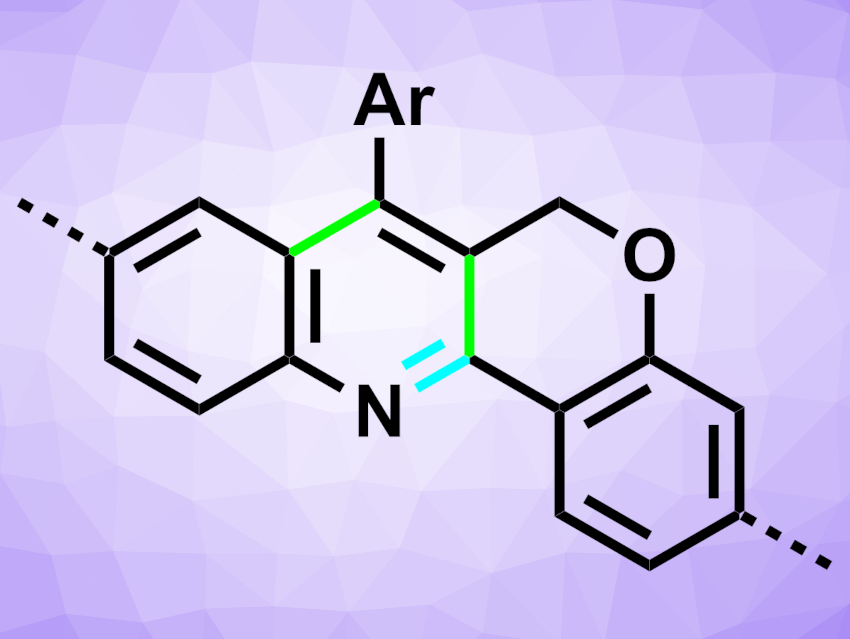Covalent organic frameworks (COFs) are porous crystalline networks made from organic building blocks. These building blocks can be linked via single- or double bonds or via rings such as triazines or imidazoles, for example. More rigid linkages of the building blocks might allow the construction of COFs with improved stability and crystallinity.
Wei Wang, Lanzhou University, Gansu, China, and colleagues have performed the first synthesis of fused-ring-linked COFs. The team prepared four different pyrano[4,3-b]pyridine-linked COFs (linking structure pictured) in a one-pot cascade process under solvothermal conditions, using a Lewis-acid catalyst such as Sc(OTf)3. They started from two different multitopic anilines and two different O–p-tolylpropargyl salicylaldehydes, which were combined to form four different COFs. First, a Schiff-base condensation forms a C=N bond (pictured in cyan) between the building blocks. Then, an intramolecular [4+2] cycloaddition closes the pyridine ring (bonds pictured in green), followed by a dehydroaromatization.
The resulting COFs, which the team named LZU-600, 601, 602, and 603, show high crystallinity, as was confirmed by powder X-ray diffraction (PXRD) and high-resolution transmission electron microscopy (HRTEM). They also possess good thermal and chemical stability. According to the researchers, the work could inspire the development of further new linkages in COFs, because many other reactions could be integrated into such a cascade protocol.
- Fused-Ring-Linked Covalent Organic Frameworks,
Jie Feng, Ya-Jie Zhang, Sheng-Hua Ma, Chen Yang, Zhi-Peng Wang, San-Yuan Ding, Yun Li, Wei Wang,
J. Am. Chem. Soc. 2022.
https://doi.org/10.1021/jacs.2c02173

![Synthesis of [c2]Daisy Chains via Mechanochemistry](https://www.chemistryviews.org/wp-content/uploads/2025/04/202504_RotaxanesWithSolidStateMechanochemistry-125x94.png)

